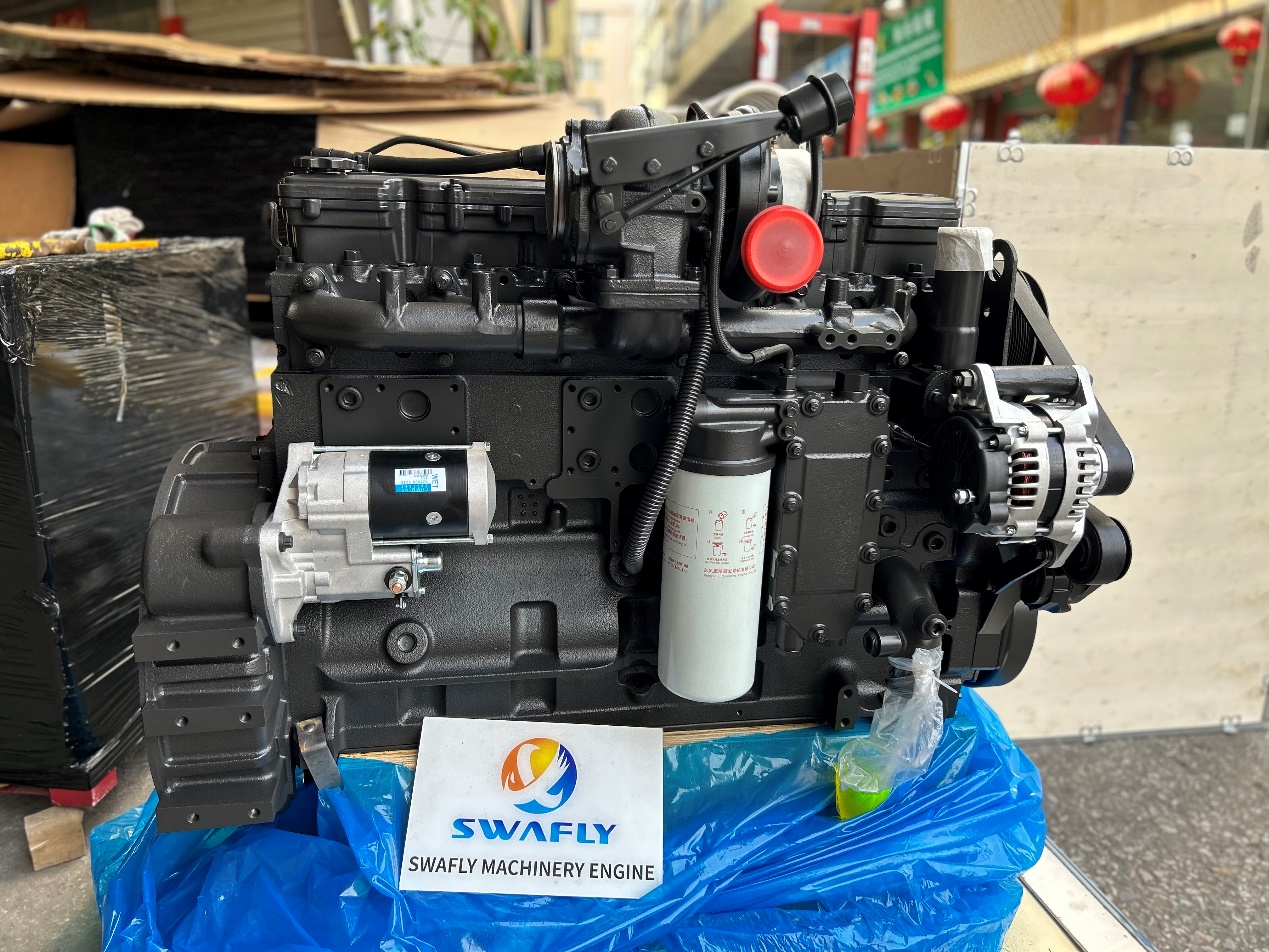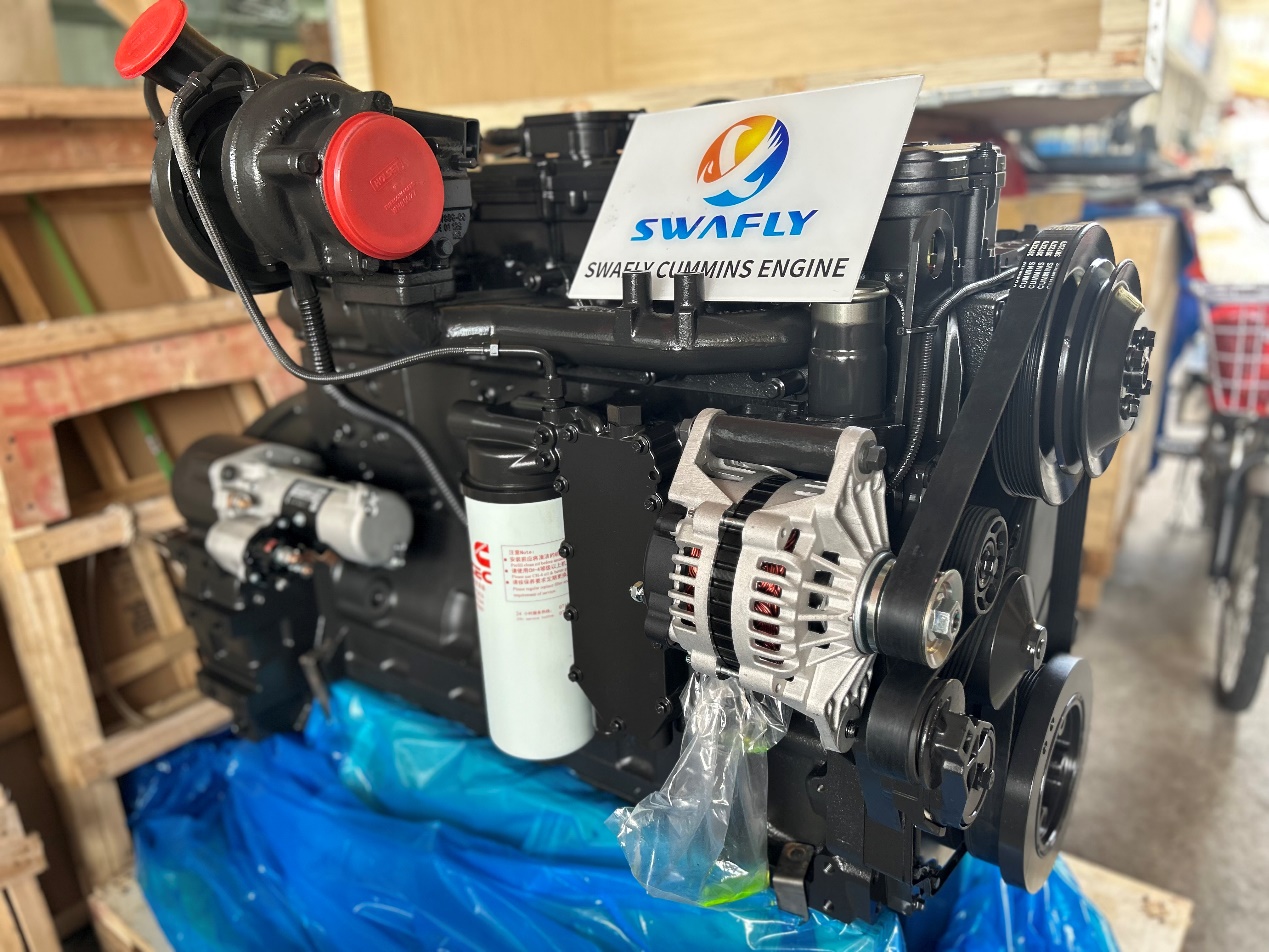
- English
- Español
- Português
- русский
- Français
- 日本語
- Deutsch
- tiếng Việt
- Italiano
- Nederlands
- ภาษาไทย
- Polski
- 한국어
- Svenska
- magyar
- Malay
- বাংলা ভাষার
- Dansk
- Suomi
- हिन्दी
- Pilipino
- Türkçe
- Gaeilge
- العربية
- Indonesia
- Norsk
- تمل
- český
- ελληνικά
- український
- Javanese
- فارسی
- தமிழ்
- తెలుగు
- नेपाली
- Burmese
- български
- ລາວ
- Latine
- Қазақша
- Euskal
- Azərbaycan
- Slovenský jazyk
- Македонски
- Lietuvos
- Eesti Keel
- Română
- Slovenski
- मराठी
- Srpski језик
Essential Guide to Lubrication System Care for Cummins QSC8.3 and QSL9 Engines
2025-03-13
The lubrication system in Cummins QSC8.3 and QSL9 engines plays a vital role in minimizing friction, cooling engine parts, and preventing early wear. Proper lubrication safeguards metal components, ensuring they don’t come into direct contact, which could lead to significant engine damage.
Understanding the oil pump’s functionality, the significance of oil filter upkeep, and how to detect and repair oil leaks is key to enhancing engine longevity, boosting performance, and avoiding expensive repairs. This guide offers a detailed look at the lubrication system, maintenance best practices, troubleshooting oil leaks, and maintaining optimal oil levels for Cummins QSC 8.3 and QSL9 engines.

1. Functions of the Lubrication System
The lubrication system in diesel engines serves multiple critical purposes:
· Friction and Wear Reduction: Oil creates a protective layer between metal parts, preventing direct contact.
· Component Cooling: Oil absorbs and dissipates heat from bearings, pistons, and the crankshaft.
· Contaminant Removal: Oil transports debris and metal particles to the filter, preventing sludge accumulation.
· Piston Ring and Cylinder Wall Sealing: Oil aids in maintaining compression efficiency.
· Corrosion Prevention: Anti-corrosion additives in oil protect internal parts from rust and oxidation.
2. Oil Pump Functionality and Maintenance
2.1 Oil Pump Operation
The oil pump is the core of the lubrication system, ensuring pressurized oil reaches all essential engine parts. It draws oil from the sump, pushes it through the filter, and distributes it to bearings, camshafts, and other components.
Cummins QSC 8.3 and QSL 9 engines utilize a gear-driven oil pump, powered by the crankshaft or camshaft, to maintain consistent oil flow.
Key Components:
· Pickup Tube: Draws oil from the sump.
· Pump Housing: Houses gears that generate oil pressure.
· Relief Valve: Prevents excessive pressure that could harm seals.
· Oil Galleries: Direct oil to critical engine parts.
2.2 Symptoms of Oil Pump Failure
A malfunctioning oil pump can lead to severe engine damage. Warning signs include:
· Low Oil Pressure Warning: Indicates pressure below the recommended range (30-40 psi at operating temperature).
· Engine Overheating: Increased friction from inadequate lubrication causes excess heat.
· Unusual Noises: Knocking or ticking sounds due to insufficient lubrication.
· Sludge Accumulation: Contaminants settle in the sump instead of being filtered.
2.3 Oil Pump Servicing
Steps to inspect and service the oil pump:
1. Drain engine oil to remove debris.
2. Remove the oil pan to access the pump.
3. Check the pickup tube for blockages.
4. Inspect gear clearance and the relief valve for wear.
5. Replace damaged parts and reassemble the pump.
6. Reinstall the oil pan and refill with fresh oil.
If the pump is excessively worn, replacement is necessary to avoid engine failure.
3. Oil Filter and Lubrication Maintenance
3.1 Importance of Regular Oil Changes
Regular oil and filter changes are crucial for engine health. Over time, oil degrades, losing its lubricating properties and leading to increased wear.
Recommended Intervals:
· Standard Oil: Every 250 hours or 6,000-10,000 miles.
· Synthetic Oil: Every 500 hours for high-quality synthetic diesel oil.
· Severe Duty: Every 200 hours in harsh conditions (extreme temperatures, heavy loads).
3.2 Selecting the Right Engine Oil
Using the correct oil type ensures optimal lubrication and engine protection.
Cummins Recommended Oils:
· 15W-40 API CJ-4 or CK-4: Ideal for standard operations.
· 5W-40 Synthetic Diesel Oil: Best for cold climates.
3.3 Oil Filter Replacement
The oil filter removes contaminants, preventing sludge buildup. A clogged filter reduces oil flow, leading to low pressure and potential engine damage.
Replacement Steps:
- 1. Drain old oil from the engine.
- 2. Locate and remove the old filter using an oil filter wrench.
- 3. Apply fresh oil to the new filter’s gasket.
- 4. Install the new filter and hand-tighten it.
- 5. Refill the engine with the correct oil type and amount.
- 6. Start the engine and check for leaks or pressure warnings.

4. Detecting and Repairing Oil Leaks
4.1 Common Causes of Oil Leaks
Oil leaks can result in lubrication loss, reduced efficiency, and safety risks. Common causes include:
· Worn Gaskets and Seals: Valve cover, oil pan, and crankshaft seals deteriorate over time.
· Loose or Damaged Drain Plug: A stripped or over-tightened plug can leak.
· Cracked Oil Cooler or Lines: Damaged components may cause external leaks.
· Overfilled Oil: Excess oil increases pressure, forcing oil past seals.
· High Oil Pressure: A faulty relief valve can cause leaks.
4.2 Identifying Oil Leaks
· Visual Inspection: Check for oil puddles or wet spots on the engine block, oil pan, and valve cover.
· Dye Test: Add UV dye to the oil and use a UV light to detect leaks.
· Pressure Testing: Use an oil system pressure test kit to identify internal leaks.
4.3 Repairing Oil Leaks
· Valve Cover Gasket Replacement: Remove the cover, clean the surface, and install a new gasket.
· Oil Pan Gasket Replacement: Drain oil, remove the pan, and apply a new gasket.
· Crankshaft Seal Replacement: Remove the timing cover and pulley, then install a new seal.
· Oil Cooler Repair: Replace damaged coolers or lines.
· Drain Plug Fix: Use a new crush washer and tighten to the recommended torque.
5. Preventative Maintenance Tips
· Check oil levels weekly and top off as needed.
· Use high-quality oil and filters.
· Inspect for leaks regularly and address them promptly.
· Keep oil coolers and passages clean.
· Adhere to oil and filter change schedules to prevent sludge buildup.
Conclusion
Proper lubrication system maintenance is essential for maximizing the lifespan and performance of Cummins QSC 8.3 and QSL 9 engines. Regular oil changes, oil pump servicing, and leak prevention ensure optimal efficiency and reliability.
For top-quality replacement parts, filters, and oil pumps, visit SWAFLY ENGINE for the best aftermarket components for Cummins diesel engines.


